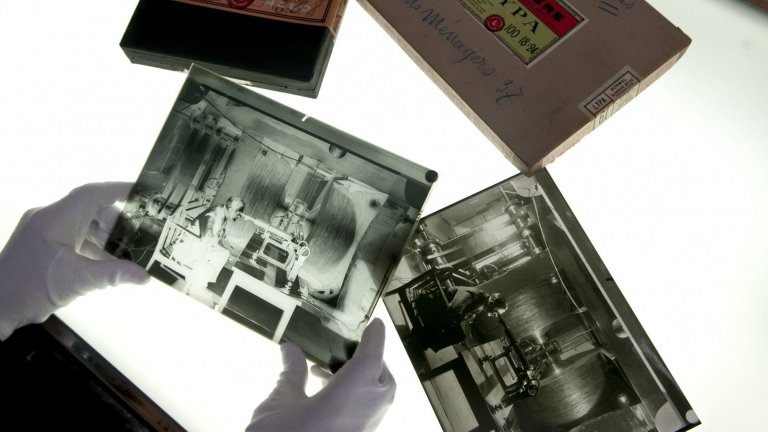
© Cyril Frésillon / CNRS Images
View the mediaArchives
Innovative weapons systems for soldiers, wonderful vintage electrical appliances, inventors thrilled by their own incredible design ideas: come with us and delve into the fascinating archives of the ONRSII, the first ever "Office for Inventions" in the history of France!

© Cyril Frésillon / CNRS Images
View the mediaAt the end of the First World War, the world of science was put to work to drive economic growth. Responding to research programmes launched in the public interest, the ONRSII became a vital link between the science laboratory and the factory. The French government wanted to take all the ingeniousness and inventiveness that had been drawn on to defend the nation and use it to drive the development of innovative domestic devices that would revolutionise the daily lives of the French.
Thus, in 1922, the ONRSII (the French National Office for Scientific and Industrial Research and Inventions) was set up. This was a national body encompassing every field of scientific research applied to further the development of France’s civil industries. Directed by Jules-Louis Breton, a member of the French Senate, the ONRSII was tasked with encouraging what we would now call Research & Development, assisting inventors and university institutes to undertake research and organise design studies needed for public services. Based in Meudon, at the pavillon Bellevue, it centralised a group of test laboratories (paints and varnishes, refrigerating machines, engines, etc.).
However, in the 1930s, the ONRSII suffered as a result of fallout from the financial crisis and the support of industrial unions waned until it disappeared altogether. The ONRSII was then closed down in 1938, to be replaced by the French National Centre for Applied Scientific Research (CNRSA), the forerunner of today’s CNRS.
Here you will find images from the archives of inventions dating back to the heady days of the inter-war industrial age. You’ll find photographs and films of some wonderfully unusual and old-fashioned devices, including the first ever life jackets, folding wheelbarrows and washing machines straight out of another era.
Our work is guided by the way scientists question the world around them and we translate their research into images to help people to understand the world better and to awaken their curiosity and wonderment.